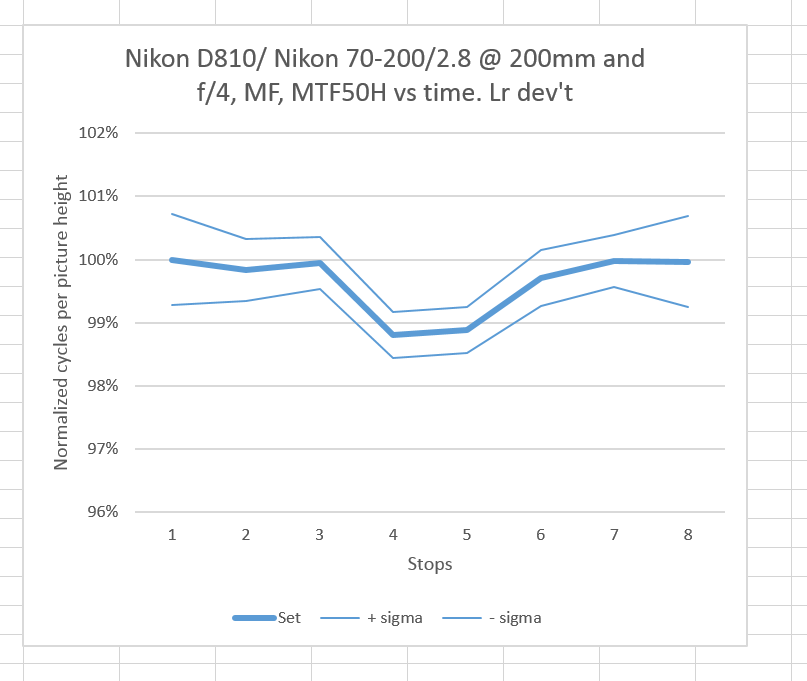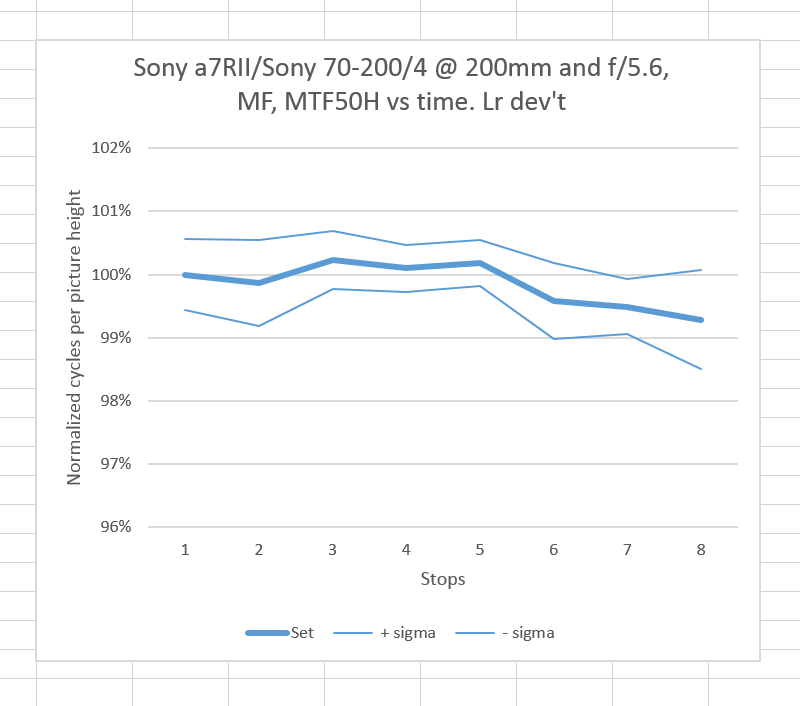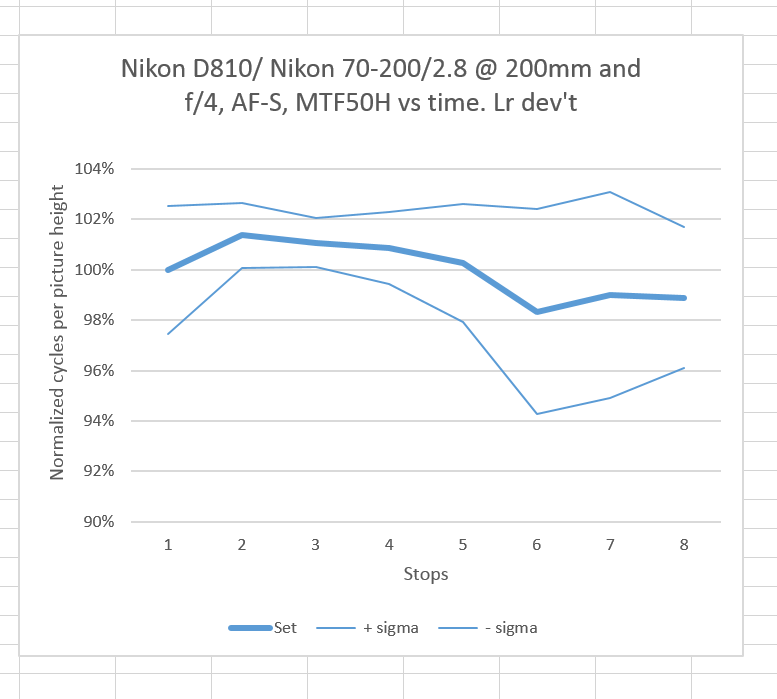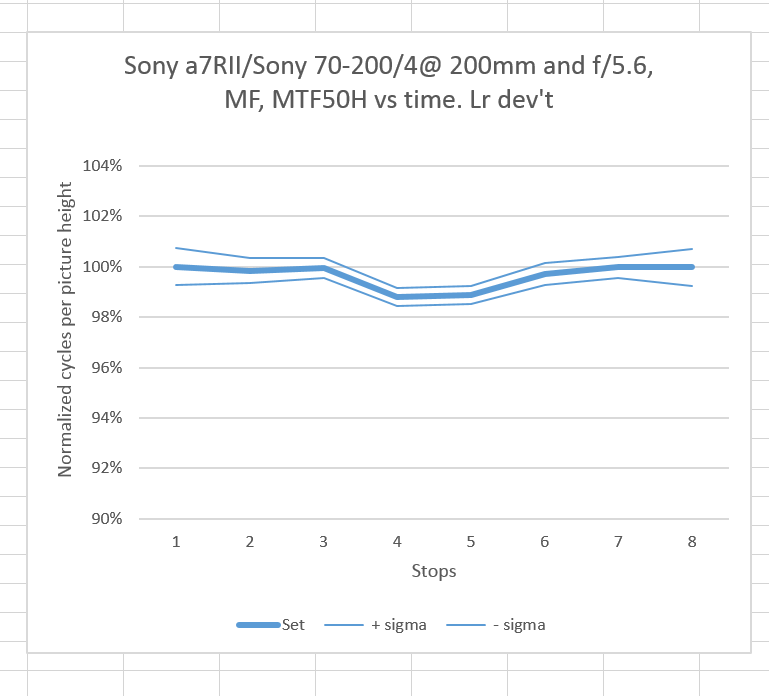Taking the exact same data from the previous post and putting into the 16-exposure packets that we’ve been using for MTF testing, we get the following for Nikon equipment manually focused (to keep things simple, I’ll just show you the normalized results):
That’s the kind of variation that’s just built into the protocol and the test software. There are no focus changes here. There may be some fluctuations in light intensity, and there are surely fluctuations, although probably small ones, in shutter speed and f/stop, especially with an automatic diaphragm like the one in the Nikon lens.
When we consider focus errors, things look much worse:
For the Sony, it looks like about plus zip, minus 2 percent, and for the Nikon, it’s plus one and change, and minus about the same, but the standard deviations are much larger.
Could this be helped by manually focusing. No, it can’t. I tested that earlier. Manual focusing is even worse.
Remember how I talked about how great the Sony a7RII autofocus was with static and moderately active subjects. This provides some quantitative backup for my earlier statements.




Ilkka Nissilä says
Why not test with the same aperture? It is more difficult to focus precisely when the depth of field is shallower.
Jim says
I had the f/4 data for the Nikkor, and then decided to test the Sony. The Sony isn’t nearly as sharp at f/4, so I stopped it down a bit. In a perfect world I’d test both lenses at both apertures, but these tests are labor intensive, so I took a shortcut.
Good catch.
Jim